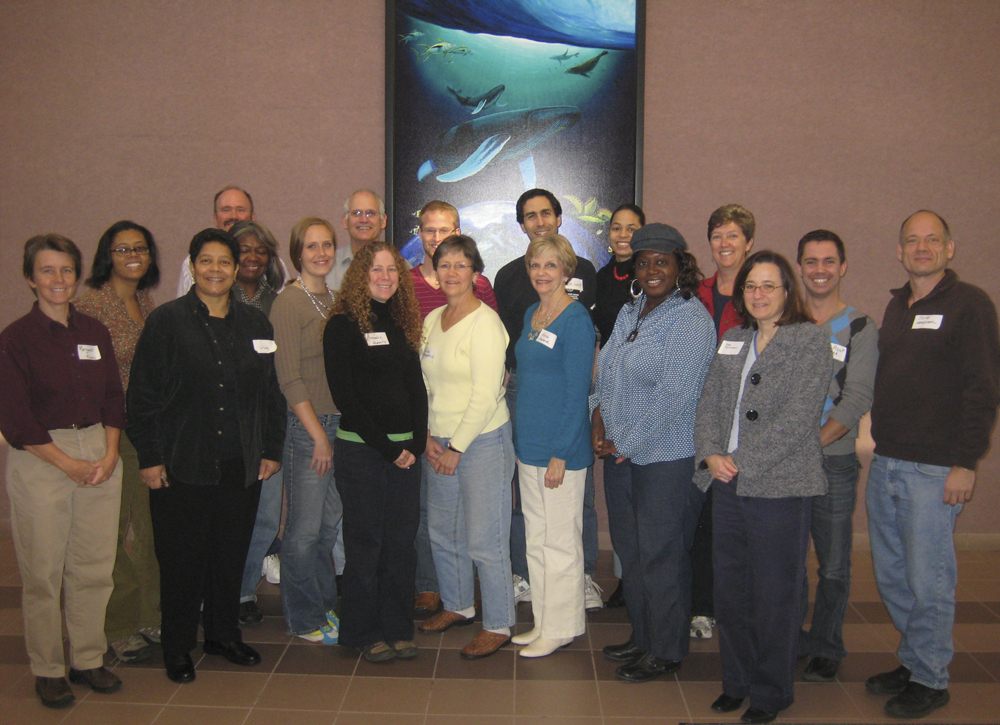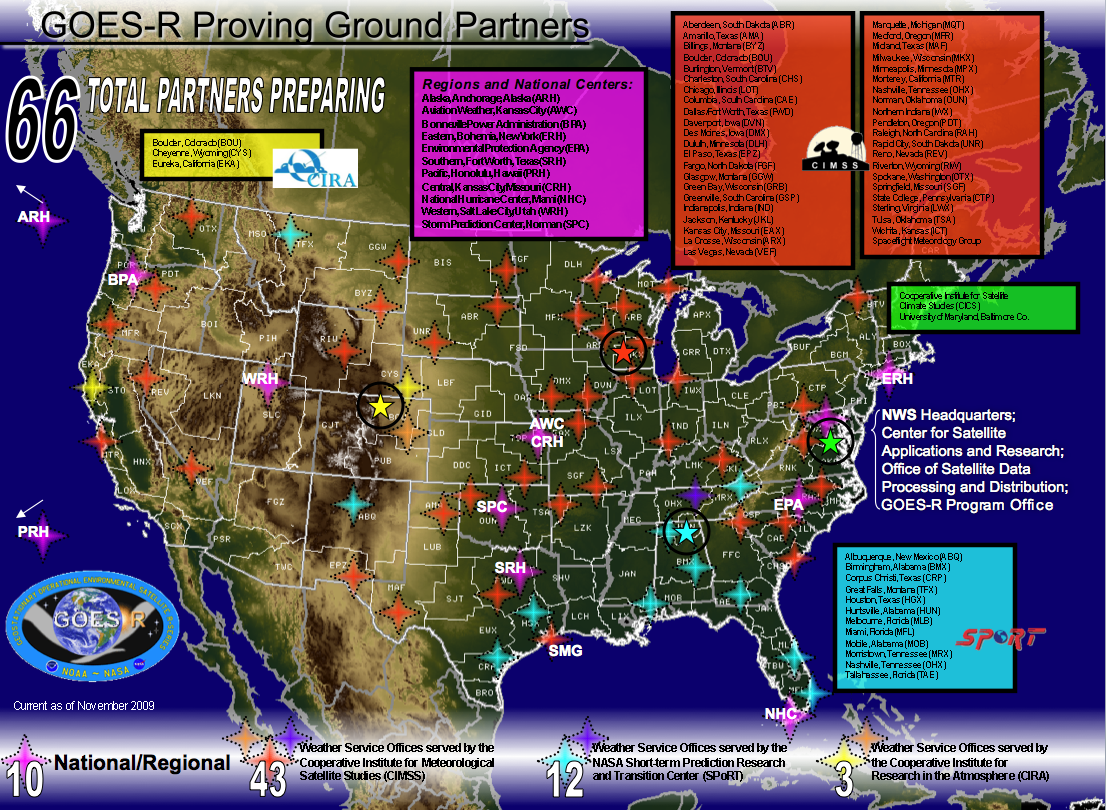
[ Archive ]

 |
ASPB and CIMSS Weekly Report
[ Archive ] |
 |
IN THE PRESS:
German Public Radio Interview on Arctic Climate Trends: Yinghui
Liu, Cooperative Institute for Meteorological Satellite Studies, and
Jeff Key, NESDIS/STAR, were interviewed by German Public Radio
regarding their recent research (with X. Wang, CIMSS) on the influence
of changes in cloud cover and sea ice extent on Arctic surface
temperature trends. The story aired (in German) on November 9, 2009 (http://www.dradio.de/dlf/sendungen/forschak/1066710/). (J. Key, E/RA2, 608-263-2605, jkey@ssec.wisc.edu; Y. Liu, CIMSS)
ITEMS FOR THE ADMINISTRATOR:
ITEMS FOR THE ASSISTANT ADMINISTRATOR:
ITEMS FOR THE OFFICE DIRECTOR, STAR:
Director of Chinese National Satellite Meteorological Center Visit: Dr. Jun Yang, Director of the National Satellite Meteorological Center (NSMC) in Beijing, visited the Cooperative Institute for Meteorological Satellite Studies (CIMSS) November 9-10, 2009. Dr. Yang met individually with many CIMSS and NESDIS scientists, discussing topics such as NSMC/CIMSS collaboration, NOAA satellites, polar science, direct broadcast, visualization, clouds, surface remote sensing, nowcasting, intercalibration, tropical cyclones, and air quality. He gave a seminar describing China's past, current, and future satellite systems. Dr. Yang also participated in the 50th Anniversary of Explorer-7 celebration and the GOES Users' Conference the week before his visit to CIMSS. (J. Li, CIMSS, 608-262-3755; J. Key, E/RA2, 608-263-2605, jkey@ssec.wisc.edu)
CIMSS-NOAA-NSF Collaboration to Advance Climate Literacy: The Cooperative Institute for Meteorological Satellite Studies (CIMSS) teamed up with NOAA to conduct a National Science Foundation (NSF)-funded Climate Education Summit on Saturday November 7, 2009 at the NOAA Science Center in Silver Spring, Maryland. The program targeted G4-12 geography, history and political science teachers in an effort to discern how the social sciences can advance climate literacy. CIMSS Director Dr. Steve Ackerman led the agenda which was organized by CIMSS outreach specialist Margaret Mooney. Dan Pisut and Nina Jackson from NOAA-NESDIS arranged the venue and LuAnn Dahlman from NOAA’s Climate Program Office presented on the essential principles of climate literacy. Fourteen area teachers participated to learn more about our changing climate. They also provided feedback to NSF, NOAA and CIMSS, each working to support climate system comprehension and assist educators overcome challenges explaining climate change topics and mitigation strategies to students and colleagues. (S. Ackerman, CIMSS, 608-263-3647, M. Mooney, CIMSS, 608-265-2123)
 (Click image to enlarge)
(Click image to enlarge)
Figure caption: November 7 Climate Education Summit Participants.
Manuscript Published on the Potential Benefits of Advanced Geostationary Sounders: A manuscript was published in the Journal of Atmospheric and Oceanic Technology on the potential benefits of advanced geostationary sounders. The title is “High-Spectral- and High-Temporal-Resolution Infrared Measurements from Geostationary Orbit”. The authors are T. J. Schmit (STAR), J. Li (Cooperative Institute for Meteorological Satellite Studies), S. A. Ackerman (CIMSS), and J. J. Gurka (GOES-R Program Office). The paper can be downloaded at ftp://ftp.ssec.wisc.edu/ABS/publications/1248_JTECH_Nov-2009.pdf. (T. Schmit, E/RA2, 608-263-0291, tim.j.schmit@noaa.gov, J. Li, CIMSS, 608-262-3755)
ITEMS FOR THE DIVISION CHIEF, CoRP:
MODIS Data Identified as “critical” for Future AWIPS Releases: Due to the wide use of University of Wisconsin-Madison (UW) MODerate Resolution Imaging Spectroradiometer (MODIS) Direct Broadcast (DB) data by National Weather Service (NWS) forecasters, the Advanced Weather Interactive Processing System (AWIPS) migration team has labeled the MODIS data as “critical” for future releases. Jordan Gerth (Cooperative Institute for Meteorological Satellite Studies) has been given the task of developing a MODIS plug-in for AWIPS II. So far, 43 different forecast offices are receiving MODIS data directly through UW via the Local Data Manager distributed through the NWS Regional Headquarters as part of the GOES-R Proving Ground. Twelve other offices are using UW MODIS DB data as provided through the Short-term Prediction Research and Transition (SPoRT) Center. The keys to success of this effort are the quality of the MODIS data, the speed at which the data and products can be delivered because of DB, the range of the UW antenna covering the entire lower 48 states, Jordan Gerth’s knowledge of the NWS forecasters and AWIPS, Scott Bachmeieir’s NWS Virtual Institute for Satellite Integration Training (VISIT) training module “MODIS Products in AWIPS”, and direct visits to Forecast Offices to determine how MODIS data can meet their needs. (K. Strabala, CIMSS, 608-263-8752, J. Gerth, CIMSS, 608-263-4942, S. Bachmeier, CIMSS, 608-263-3958, W. Feltz, CIMSS, 608-265-6283, T. Schmit, E/RA2, 608-263-0291, tim.j.schmit@noaa.gov) (Click image to enlarge)
(Click image to enlarge)VISITORS:
NEXT WEEK:
LOOKING AHEAD:
| Archived Weeklies Page | Submit a report item |